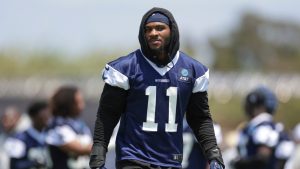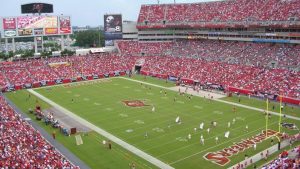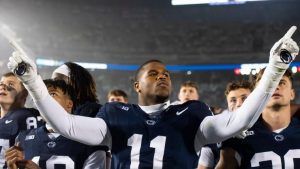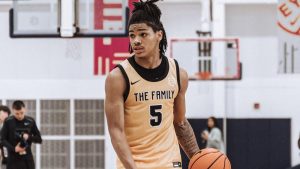Good luck to anyone who hopes to understand the NBA’s new collective bargaining agreement.
The league’s financial circuit was already complicated. Now, new rules are entering the basketball world, ones that complicate team building even more.
The Athletic is here to simplify the process.
The New York Knicks’ summer is loaded with questions about the salary cap.
Why are they limited in how much they can offer Isaiah Hartenstein? Why do new rules that come into place this year incentivize them to pursue a star this summer instead of in the future? How would the financials of a Jalen Brunson or Julius Randle extension work? How much would venturing into the luxury tax affect them?
With that in mind, here is your Knicks-related salary cap cheat sheet for the upcoming offseason:
The Knicks are limited in how much they can offer Isaiah Hartenstein. Why? How does it work?
Because Hartenstein, who will become an unrestricted free agent this summer, signed a two-year contract with the Knicks in 2022, the team is now capped at how much it can pay to bring him back for next season. The two-year deal means they have only Early Bird rights, not Full Bird rights, which accrue when a player has been with a team for three or more seasons.
The Knicks can bring Hartenstein back, but they cannot offer a starting salary greater than 175 percent of his previous season’s pay.
Hartenstein made $9.2 million in 2023-24, meaning New York’s best offer to him using those Early Bird rights starts at $16.2 million for 2024-25 with a maximum value of just under $72.5 million over four years.
The rule exists to prevent stars from signing short-term contracts for cheap just so they can make the money back a year or two later. For example, LeBron James could not sign a minimum contract with a team that’s above the salary cap this summer only to re-sign with that team on a max deal in 2025.
Unfortunately for the Knicks, in situations like Hartenstein’s, the same rules can hamper front offices’ efforts to retain role players who outperform one- or two-year contracts.
Could the Knicks skirt around the Early Bird rules?
They could take one route, which would include a wink and a nudge.
If the Knicks re-signed Hartenstein to a one-year contract — he would be concluding his third season with the organization next summer — they would be allowed to re-sign him in 2025 using Full Bird rights, meaning they could bring him back for any number up to a max contract.
Agreeing to this structure would mean Hartenstein taking a risk. If he got hurt or fell off in 2024-25, it could cost him money down the line. Of course, if it worked out, he also could make more while remaining in New York.
How likely are the Knicks to be in the luxury tax next season?
Somewhere between very and extremely.
The tax threshold for 2024-25 projects to be $172 million. Payroll for the six players who are fully guaranteed alone (Randle, Brunson, Josh Hart, Mitchell Robinson, Donte DiVincenzo and Miles McBride) adds up to $102.5 million. Splice in Hartenstein for, say, $16.2 million and a $35 million salary for OG Anunoby, an unrestricted free agent the Knicks will fight to keep, and that’s $154 million for eight players.
Anunoby may cost more than that, too.
Either way, that brings the Knicks only $18 million away from the tax with six more spots to fill.
Two of those players could be first-round picks. The Knicks own the Nos. 24 and 25 selections heading into the June 26 draft, two rookies who would be slotted to make a combined $5.6 million in 2024-25. Of course, the Knicks could trade one or both of those picks.
They could hold onto Jericho Sims, whose contract is non-guaranteed for $2.1 million. They could fill out the roster with minimums. But that would represent taking a step back from a 50-win season, which they are not trying to do.
Of course, there is another salary we have not mentioned yet, which could drive the Knicks into the tax by itself…
What is the importance of Bojan Bogdanović’s non-guarantee?
In effect, the front office can choose between whether they want to pay Bogdanović $19 million to be a rostered player in 2024-25 or $2 million to play elsewhere, with that decision coming on or before June 29 (unless both sides agree to push that date back).
While the choice may be about whether Bogdanović is worth $17 million in extra money to remain with the Knicks, it’s far bigger than that because of his potential use as a matching salary in trades over the next year.
Knicks president Leon Rose and the front office could prefer to hold onto the $19 million, which it could use in a larger trade. An expiring, reasonably-sized contract owed to a helpful player such as Bogdanović could be enticing to other teams looking to move large salaries.
The Knicks may guarantee Bogdanović’s contract without having a corresponding trade lined up. Heck, they could keep him, intending to flip him before the 2025 trade deadline and not have it bear any fruit. This leaves one key question: Would James Dolan pay both Bogdanović and the increased luxury tax bill for what amounts to additional flexibility in trade talks, plus a helpful rotation player?
Why would it be so much more difficult to trade for a star in 2025 than in 2024?
The new collective bargaining agreement goes significantly further than its predecessors, making it difficult for the NBA’s most-expensive teams to add talent, primarily through the new “second apron.” Come next season, the Knicks’ payroll may rise above the first apron, which projects to be $179 million. In 2024-25 at least, they’re not in danger of venturing above the second apron, which is $10 million higher. However, finances could get tricky a year from now, when leaping above the second apron could become a requirement.
Once a team becomes so expensive, trading for a star (or anyone else, for that matter) turns increasingly difficult.
Among other limitations, teams over that threshold cannot sign other teams’ free agents for more than the minimum. They get no midlevel exceptions or trade exceptions. And more pertinent to the Knicks, these franchises can neither take in more salary than they send out in a trade nor combine multiple salaries to take on a larger contract, often referred to as aggregation.
That means if the Knicks get more expensive with expected 2025-26 raises for Brunson and/or Randle and go over the second apron, it is possible (if not probable) that most of the trade acquisitions they would want to make would not be allowable once July 1, 2025, rolls around. As such, getting the players they want should be significantly easier summer or during the 2024-25 season.
How do the financials with a possible Brunson or Randle extension work?
These are straightforward. Since Brunson has one year left on his contract before his 2025-26 player option, he is allowed to decline that option ahead of time and tack on up to $156 million over four new seasons (not counting the declined option). Of course, that is significantly less than the projected five-year, $270 million contract he could sign in 2025 with Full Bird rights as an unrestricted free agent and less than he could sign for with a new team that same summer. As such, the Knicks can make that extension offer and hope Brunson accepts while understanding it may just have to wait until 2025 if Brunson wants more than that $156 million.
Randle’s current contract is richer than Brunson’s so the Knicks can offer more in an extension: up to $181.5 million in new money over four new seasons (again, requiring him to decline his player option for the 2025-26 season). The two sides also could agree to terms less lucrative than that so there is more ground for mutually acceptable terms, though it will still be a challenging negotiation.
What exceptions can the Knicks use to acquire players?
They will have one of the midlevel exceptions at their disposal.
If they can stay below the first apron, which is projected to be $179 million, then they can use the non-taxpayer midlevel, projected to be worth $12.9 million in 2024-25 salary. Of course, especially if they retain Bogdanović, it may not be possible for the Knicks to keep their payroll so low.
If they crest over the first apron, then they could use the taxpayer midlevel exception, projected to be worth $5.2 million in 2024-25 salary.
Starting this summer, the midlevel exception is more versatile, too. Formerly, teams could use it only to sign free agents. Now, they can also use it as a trade exception, which would allow them to deal for a player without having to match salaries.
The Knicks own three other trade exceptions: a $6.8 million one, a $5.4 million one and a $3.9 million one. However, none of those exceptions can be combined or another salary to take on a larger contract.
If they find a way to stay below the first apron, they also will have the biannual exception, which projects to be worth $4.7 million in 2024-25 salary. They could use it to sign a player for a contract up to two years. However, once they surpass the first apron, they lose access to the biannual exception.
What is there to know about Anunoby’s free agency?
Since the Knicks have Full Bird rights on Anunoby, they can offer him up to the 30 percent maximum: a projected $42.3 million starting salary and $245.3 million over five seasons. As with Randle, the two sides can agree to terms less lucrative than that in years, dollars or both, but that is the upper limit.
Other suitors can offer that same starting salary but only over four years and with smaller annual raises for a total value of $181.9 million, though it is important to note that most of that difference is in the fifth season and presumably Anunoby would make something that year on a new contract, potentially even more than he signs for now considering where the salary cap is going.
(Photo of Isaiah Hartenstein and Jalen Brunson: Elsa / Getty Images)




More Stories
Kawakami: Warriors’ Joe Lacob on Steph Curry’s future, Klay Thompson’s exit and the offseason mood
For Jerry Stackhouse, chance to join Warriors’ coaching staff came at ‘perfect’ time
For Team USA, a Kevin Durant-Steph Curry reunion brings hope of a needed jolt
‘Inside the NBA’ memories: From ‘SNL’ spoofs to cookie storage, TNT show left its mark
As Olympic start nears, Steve Kerr again sounds alarm for Team USA: ‘It’s time’
Kevin Durant, Steph Curry address Team USA’s perceived age issue: ‘The thing about greatness is that you adjust’